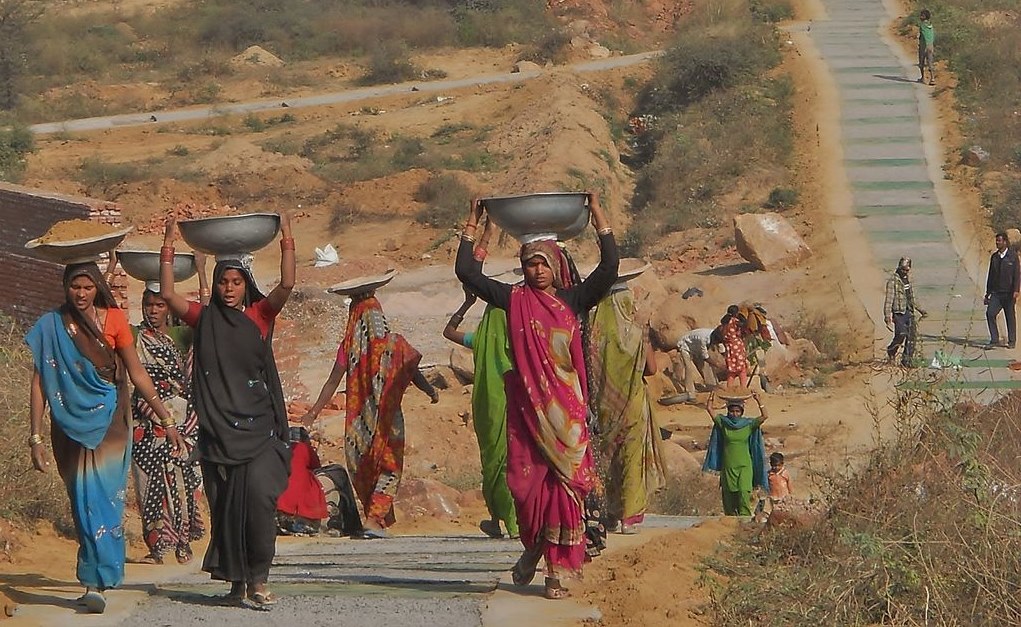Caste in Demonetization: Economic Power Shifts

The Demonitarization process set in motion by the first ever strong Hindutva Prime Minister of India, Narendra Modi, has a different economic dimension, which he and his government would never state in public. But they would pursue it to the logical end.
The real intention is to transform the Indian economy into a fully Bania controlled monopoly economy. The Bania model of Indian business and economic activity is not new. A slightly different model was experimented by the fifth century Gupta rulers of India. Whatever the Gupta rulers wanted the Brahmin pundits were made to do. The Jain vegetarian cult was projected as the most sacred spiritual food culture model and even the meaterian Brahmins were forced to praise that food culture, as against their own meaterian food culture. The Brahmin pundits of the court praised that period as the ‘’Golden Age’’ of India.
During that period caste system was made more rigid, untouchability was implemented in all its pure form. Bania Hindus followed a more ruthless caste hierarchy than Brahmin Hindus.
In a way Gandhi changed that mode of Bania-ism into a more humanitarian order, as he did not handle hard political power in his life. But PM Modi, though an OBC Bania, is a hard core political man with a monarchic bent of mind. Fortunately for him, and unfortunately for the people, he was elected as the Prime Minister of India.
Though demonetisation and the corporatisation of the Indian business model seems to have the approval of the Rashtriya Swayam Sevak Sangh headed by a Marathi Brahmin, Mohan Bhagwat, the real designers of it are the two Ambani brothers, Adani CEO, Narendra Modi and Amit Shah. To be more precise Mukhesh Ambani, Gautham Adani, Narenda Modi and Amit Shah strategized this mammoth plan.
The Brahmin control in Delhi was three fold. It had a Congress component, BJP component and bureaucratic component. This has developed from Jawaharlal Nehru’s days and sustained through all other regimes, more particularly during the terms of P.V Narasimha Rao and Atal Bihari Vajpayee. Though during the UPA period its vigor was reduced as both Sonia Gandhi and Manmohan Singh are not from that fold, it was sustained through bureaucratic and political channels of the BJP and Congress. The Pranab Mukherjee-Arun Jaitley friendship was never disconnected.
The Bengali, UP and Punjabi Brahmins have a strong hold on Delhi even now. In a way Narendra Modi, Amit Shah and Arvind Kejriwal (a powerful Bania leader now in Delhi) have weakened the Brahmin political clout in Delhi. This does not mean it has completely collapsed.
If the demonetisation agenda fails, the Brahminic network may stage a comeback. The Bania monopoly capital is trying to manage the crisis that has been created through its grip on the media. Millions of poor people have lost their livelihood but they being fed with the falsehood of future swarga sukhas.
More than half the media channels in the country, including several regional channels, are in the hands of Banias as of now. The most powerful English and Hindi channels are in the hands of the Reliance and Adani networks. Many English and regional news papers are in their hands either directly or indirectly.The indirect control comes from advertisement money. More than 75 per cent of advertisement revenue is in the hands of Bania controlled business. Hence even the channels and news papers outside their control cannot oppose these forces and survive.
The Bania control of business and the capital that accrued through business has a long history. In a way, it tried to establish its exclusivity, through the Hindu spiritual social order, which ordained that only Banias must do business. This dictum was authenticated during the Gupta period through their own political power. In the then emerging village agrarian economy no other caste was cleared for business. The rest of the caste-communities had no spiritual or social strength to oppose that dictum and that process continued through the ages.
As a result even by my childhood days in the 1960s, in the villages, only a single Shahukar family used to control all the buying and selling. With this kind of village level monopoly the village Shahukar alone would have a good bungalow when the rest of the villagers would lived thatch roof houses. Only after the Shudra landlords emerged, they through their political control and agrarian untaxed money subordinated the village Banias. However, their spiritual status as Hindu business hakhdars along with Brahmin priesthood hakhdars remained intact. The Shudra village rulers even in a Muslim ruled state like Telangana held sway, even as the Brahmin-Bania control of two areas, temple and business, continued.
Even a century before my generation Mahatma Phule recorded the control of Shetji and Bhatji in Maratha rural economy. Interestingly he used the Shetji exploitation as primary and more harsh than Bhatji’s spiritual exploitation. This micro economic control has been disturbed in several parts of India in the post-Independence period. In Tamil Nadu, for example, the Nadars, a very lower Shudra community and the Patels of Gujarat, emerged as business castes challenging the Bania local business.
Though quite a lot of small trade is in the hands of Marwadis, the Bania monopoly capital does not want to allow a chiller money based shopping system in the country.
The Indian ‘Gang of Four’ has seized the opportunity that the BJP gave. They have done this as part of the package of Hindu Nationalism. Now no force can reverse it.
(Prof. Kancha Ilaiah Shepherd is Director, Centre for the Study of Social Exclusion and Inclusive Policy,Maulana Azad National Urdu University in Hyderabad)
(The views expressed in this Opinion article are of the author’s and not of The Citizen)



